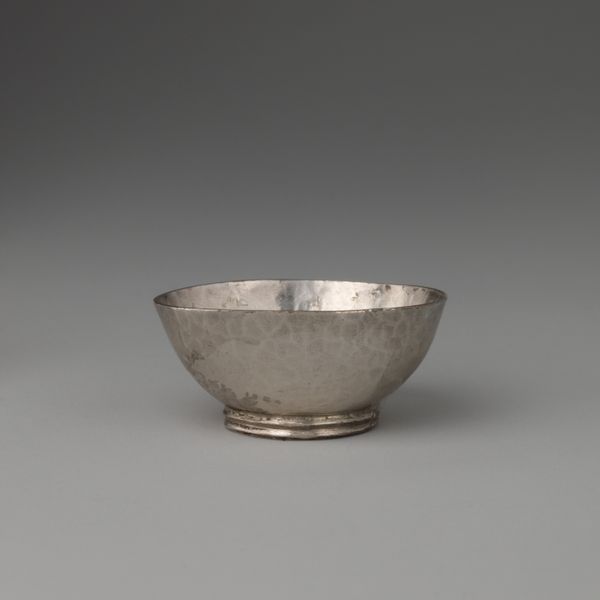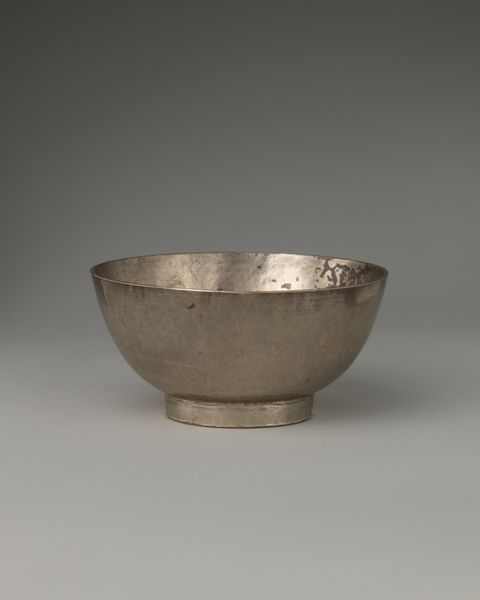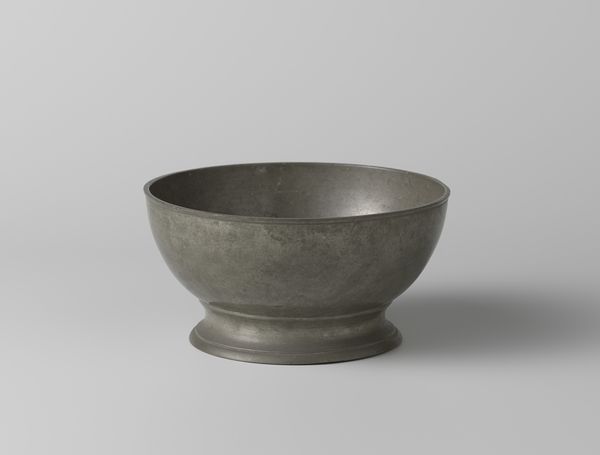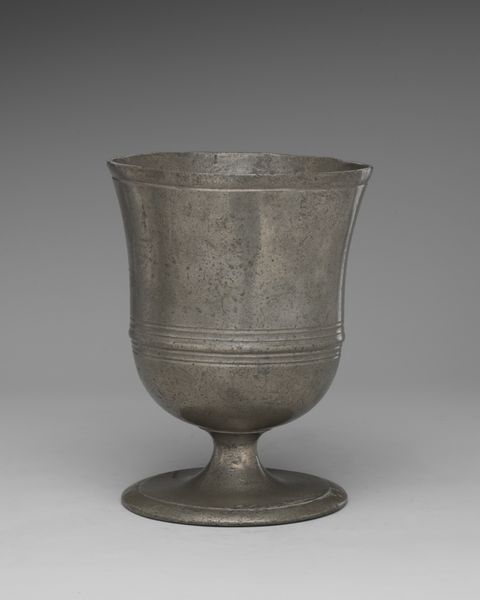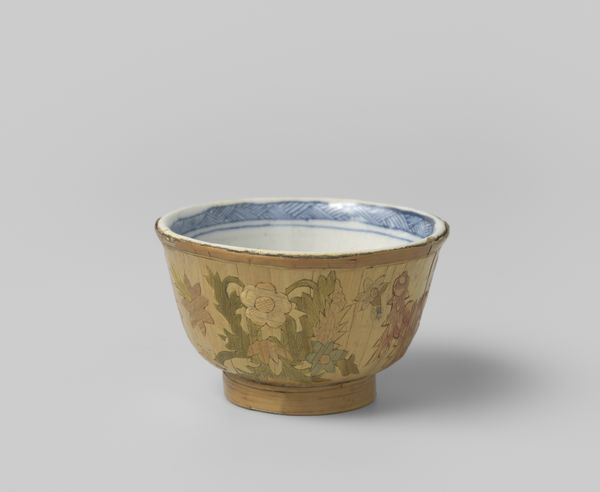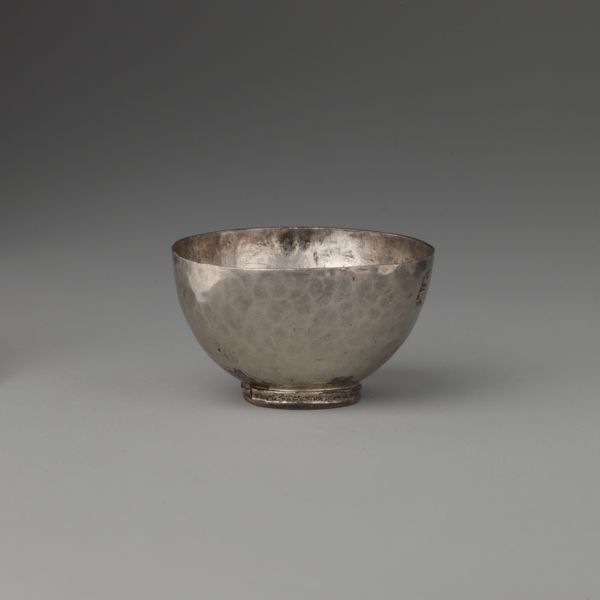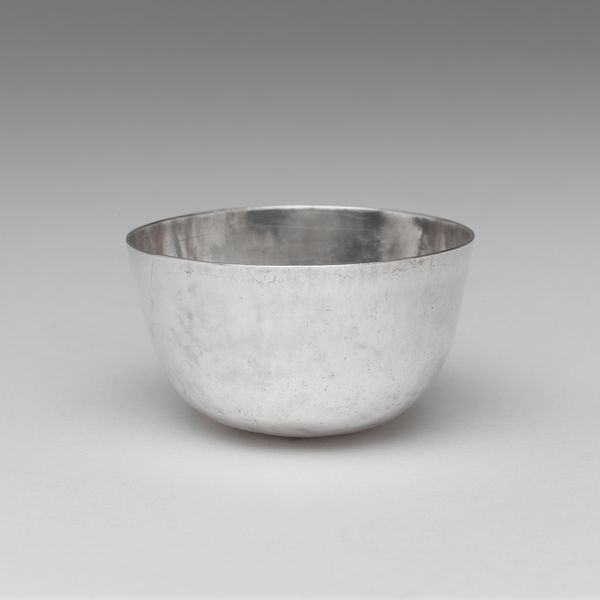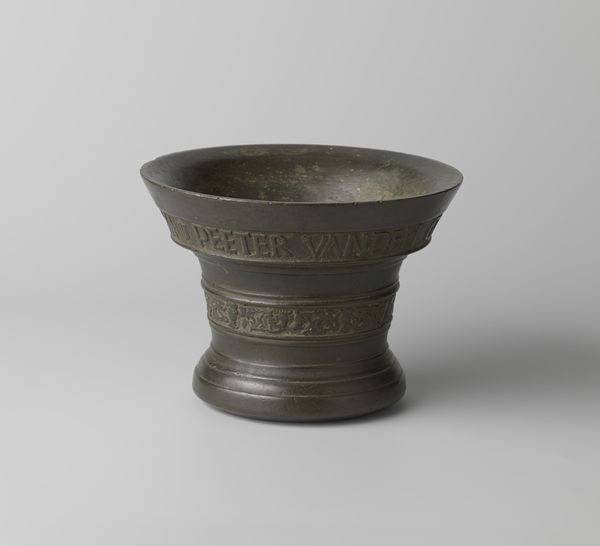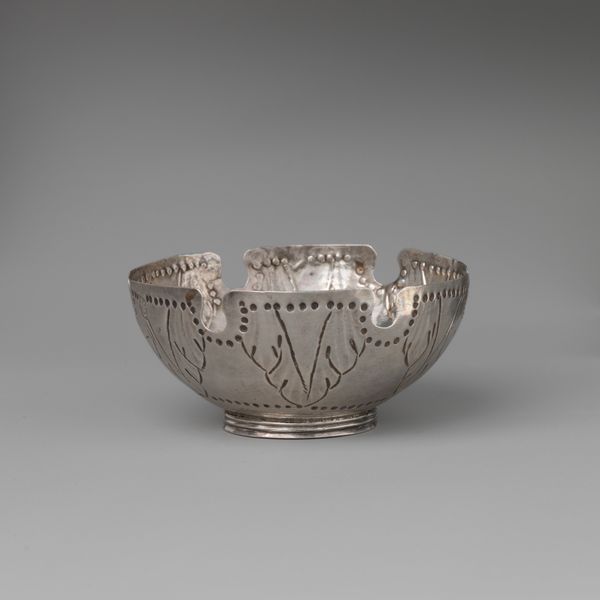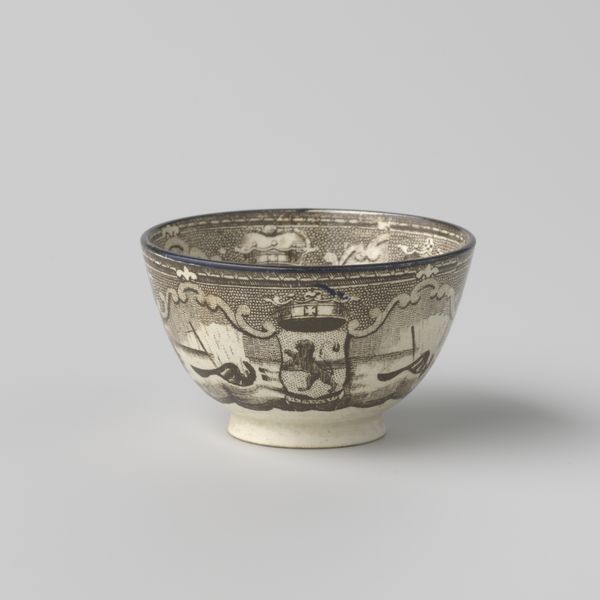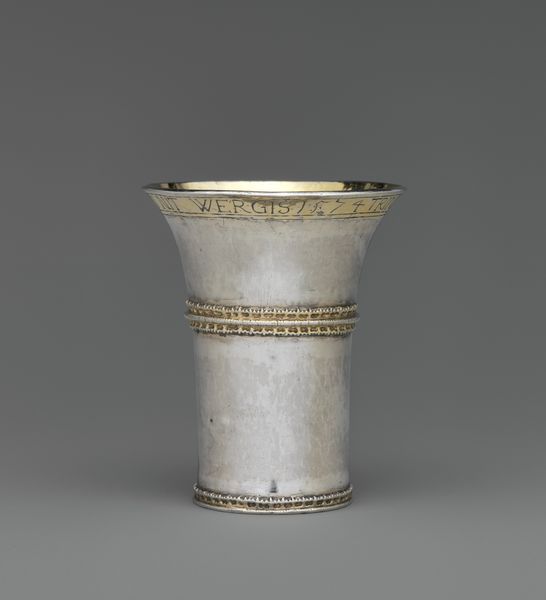
silver, metal, sculpture
#
silver
#
baroque
#
metal
#
sculpture
#
decorative-art
Dimensions: Overall: 1 5/16 × 1 3/4 in. (3.3 × 4.4 cm)
Copyright: Public Domain
Curator: Look at this charming Miniature Bowl. It’s a silver piece dating from the late 17th to the early 18th century, around 1685-1715, made during the Baroque period. It currently resides here at The Met. Editor: It's so diminutive! A tiny, shimmering thing. It's like a precious thimble or something straight out of a dollhouse, isn't it? The reflective quality gives it a quiet elegance. Curator: It definitely invites intimacy. Miniature objects were popular during the Baroque era, often serving as displays of wealth and status. They offered a means to represent the grandeur of the era on a personal scale. It could be for ceremonial purposes, table decoration or simply a child's toy? Editor: Considering the Baroque style's known for its grandeur, its adoption in something so small suggests a certain control of something exuberant to express a delicate taste. The scalloped edge gives me the impression of flower petals. Curator: Yes, the scalloped edges echo organic forms, typical for the Baroque love of natural motifs. It's interesting how the silversmith captures fluidity within rigid metal. One must ponder what specific cultural memory and domestic purpose the tiny bowl signifies. Editor: Agreed. Looking closer, it speaks to the craftsmanship that could make even the smallest objects reflect the opulence of the age, right? We see the rise of a merchant class that now have the social standing to express a unique style. Curator: The metal is marked and lightly decorated. It speaks about class display at an age when many in society are suffering and experiencing the Black Death. The symbolism of purity is highlighted via this silver form. Editor: Exactly! It also brings into focus the value placed on refined artisanship and wealth at the turn of the 18th century. What stories this tiny vessel could tell about the society that valued it. Curator: A miniature monument to the age. It encourages one to contemplate broader societal patterns reflected in minor objects of decoration. Editor: I’m left wondering how its use changed alongside fluctuating attitudes about art and life. The political framework from that era is a rich historical source.
Comments
No comments
Be the first to comment and join the conversation on the ultimate creative platform.
